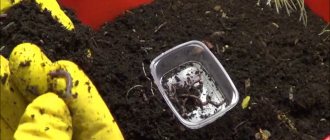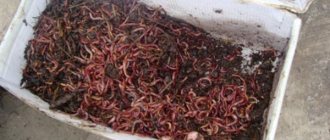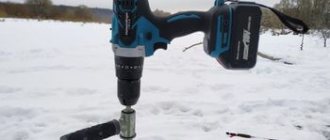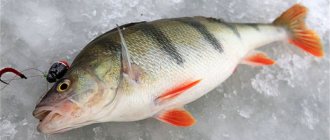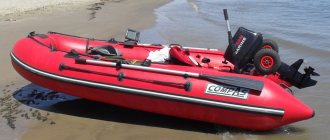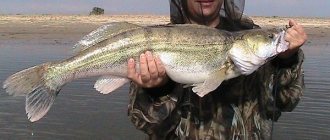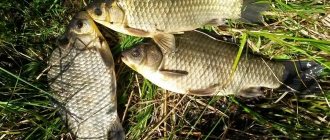Where and how to dig up worms for fishing?
Worms have been used in fishing since ancient times. Many centuries ago, our ancestors noticed that their elongated body easily fits onto a hook and causes the fish to actively bite. Today we will talk about how to catch these creatures for fishing.
Types of worms and habitats
Most fish, both predatory and peaceful, are particularly keen on worms. Annelids are found in nature in many varieties, each of which has a specific habitat and is used to catch specific types of aquatic life. Let's look at the most popular of them.
Dung
To dig up these representatives of annelids, you should go to the village. Local residents, cleaning out cowsheds, create large piles of manure. They are inhabited by three types of worms:
- red dung beetle;
- Californian;
- rainy smelly.
These worms can be found in ordinary soil, but manure is considered their favorite delicacy. So they wait, and as soon as local residents dump waste from the barnyard, they immediately fill the pile.
Crawling out
This is the most common type of worm. You can dig it in any area where there is an area planted with trees, shrubs and grass. It is the crawlers that are popularly called earthworms; they received this nickname due to the fact that after rain they crawl to the surface of the earth. You can find them near the roots of plants or under the turf. Most of the crawlers grow up to 8-15 cm. But there are individuals whose length reaches 30 and even 40 cm.
Mud resident
Quite impressive specimens of ringed fish live on the shores of swamps, ponds and lakes - some of them reach 50 m, and their width is comparable to the finger of an adult. Of course, such huge worms are rarely encountered; most of their representatives are slightly smaller. Such creatures have strong and fleshy bodies, while the mobility of this ringed species is low.
They sit shallow and can be found even on the surface. This bait is optimal for catching catfish.
Reddish
You've probably encountered such worms while digging in the top layers of compost or humus. Their body gives off brownish-red hues, and there may be purple notes on the back. They are distinguished from red dung worms by their pearlescent surface. Such representatives of ringed fish have a strong body and are characterized by high activity.
Allopophora
Roaches bite well on such worms. In their shape, they practically do not differ in any way from all other types of earthworms, but at the same time they have a yellowish-green tint. These individuals can be dug up in gardens, orchards and on steep banks. Most of them can be dug up in a moistened substrate - in this case you don’t even have to dig deep.
If the soil is dry, then the ringed ones go deeper and the work to extract them will be very long.
Tetrahedral
Of course, not the whole worm has four sides, but only its back part - there the unusual shape catches the eye. These are small worms, their length does not exceed 5 cm. They usually live on the wet banks of rivers, lakes and other bodies of water. You can find them under old moss; they are not found in dry soil.
There are also other ringed ones, for example, sea, marsh and truffle. Polychaete sandy specimens are popular among fishermen; they are found in river deltas, as well as along the coasts of the seas. At the same time, you don’t even need to dig up such worms - fishermen can notice them by their bumps on the ground. Many varieties of annelids are too thin to be caught at all. Crawlers and dung beetles remain the most popular among fishing enthusiasts.
Habitats and fishing methods
Body length varies from 2 cm to several meters (in some species). The height of local representatives reaches about 15 cm. It received its name due to its ability to crawl out of holes to the surface during rain. In fishing, it is used as bait for peaceful species, although predators do not disdain it: perch, pike perch, catfish.
Earthworms can be found on all continents except Antarctica. The favorite habitat is oily soil with a high percentage of moisture. This species is rare in sandy and clayey soils; it is more attracted to black soil.
In dry weather, finding representatives of oligochaetes is problematic. They go deep underground or hide in the roots of vegetation, under the shade of trees, where direct rays of the sun do not reach the ground. In the heat, you can make a generous spill of soil, thereby simulating rain - the crawl will definitely appear on the surface, but in the late afternoon.
If the average air temperature does not exceed 20-25°C, worms can be dug with a shovel. You should start your search in grass vegetation, since its roots retain moisture well.
Everyone decides for themselves where to dig up worms for fishing, but the best way to catch them is to hunt at night with a flashlight. Catching crawlers is done after rain in the dark. This requires a little lighting and sleight of hand.
To learn more:
Features of fishing with spoon spoons: pros and cons
Crawlers are tenacious worms, but the storage area should be prepared before you collect them. The bait is placed in a loose container with leaves and a small amount of soil. It should be kept in a cool place, for example, in the lower compartments of the refrigerator. If these rules are followed, the worm does not lose viability for a month.
Preparing for mining
Worms are found in the soil, in compost, in river sand and even in water. They can be found near the rhizomes of trees and shrubs, in the grass and in fallen leaves after heavy rain. To dig them out, you need to prepare.
To work you will need a tool. If the ground is soft, an ordinary piece of iron, a plank or a children's toy shovel will be enough. In hot and dry weather, worms go deep into the ground, and the soil cannot be dug out so easily. In this case, you need a sharp shovel; its dimensions depend on the density of the earth and how many worms you need to collect.
Dangerous worms attack Russians in bodies of water: how to escape from them
News about the so-called swimmer's disease, which can be contracted in this body of water, has thinned the beach of vacationers. In the Nizhny Novgorod region, there are more and more patients with the same symptoms every day. After bathing, unbearable itching appears, and the body becomes covered with a red rash.
It is not visible, but it is there - a microscopic parasite, the larva of a cercarial tapeworm. It looks like dozens of mosquito bites. These are the sites of contact with the cercariae.
A local outbreak of circariasis has already been noticed in the Chelyabinsk region.
It’s a paradox, but Turgoyak is called the Ural Baikal and one of the cleanest lakes in the region. Therefore, no one expects the appearance of a red rash after swimming. Birds may be the reason: ducks and seagulls carry parasites, and the abnormally hot weather that lasted throughout May made standing water near the shore a real incubator.
It is near the shore or, for example, in the reeds that the concentration of worms is off the charts. Therefore, those who do not go deep, that is, first of all, children, are especially vulnerable.
“The child gurgles in the water all the time; she suffered the most. There were spots everywhere: on the stomach, on the back, on the legs, even on the neck, everything itched terribly,”
- says the mother of the victim Taisiya, Irina Petri.
This is what the larva itself looks like. The size of a cercaria is less than a millimeter. In front of the worm there is an oral sucker, which allows it to penetrate under the skin, and in the back there is a long forked tail, with which the parasite pushes itself deeper.
“The so-called cercariae is a parasite, but not for humans, it parasitizes waterfowl and does not pose a danger to humans,”
- says Dmitry Lipshits, head of the municipal hygiene department of Rospotrebnadzor for the Nizhny Novgorod region.
It does not pose a mortal danger, but it can cause a lot of problems. Inside a duck or seagull, cercariae live for about two weeks, but in thicker human skin this is not the case.
“They die quickly enough, within 1-2 days, under the skin. And as a result, an allergic or, more precisely, a toxic-allergic reaction,”
noted the head of the Department of Infectious Diseases of PIMU, Doctor of Medical Sciences Viktor Krasnov.
In exceptional cases, it can lead to anaphylactic shock. To avoid this, doctors advise taking a shower immediately after swimming and drying yourself with a hard-lined towel. In case of infection, be sure to seek help; there is a risk of introducing a new infection through the wounds. Taking into account the hot weather and the large number of vacationers, Rospotrebnadzor predicts a deterioration in water quality, and therefore an increase in cases of swimmer illness.
Digging technology
All fishermen know how to dig. However, the extraction of worms has its own subtleties. To get a good “harvest” of ringed fish, you should follow the recommendations of experienced fishermen.
- While digging, try not to make sudden movements, otherwise the number of worms chopped with a shovel will increase sharply. However, you can also take defective specimens with you - they will be a good addition to your bait.
- The most serious mistake of all novice fishermen is adding water to the container with worms. There is no need to do this; just lightly moisten the substrate as it dries. You need to use water from a reservoir, at least settled or filtered. Excess fluid will make the worms watery. The only exception is leeches, they will need water.
- It is best to do digging early in the morning. The high humidity of the soil at this time of day causes the worms to rise to the surface.
- Create a vibration. When the ground shakes, the worms receive a signal that a mole is nearby - to avoid an unpleasant encounter, they rise to the top. It’s easy to create a vibration; to do this, you need to stick a stick into the ground and rotate it. Alternatively, you can place a small iron sheet on the ground and lightly tap its surface. Usually 3-5 minutes is enough for earthworms to crawl out of the ground.
How to dig up worms for fishing, watch the video.
Source
Where and how to dig worms for fishing
Until recently, all domestic fishermen obtained worms for fishing exclusively in this way. They went to places where they were concentrated and dug. The situation has changed, which was influenced by the fishing market, which included this bait already packaged in jars. Fishermen, especially representatives of recent generations and people living in big cities, “forgot” about the traditional catch of the worm and realized that it was easier to buy it. In this article we will tell you where to go, where to dig up worms for fishing, what types there are, where they live, what you should take with you, and also present some tips for storing bait.
How to Preserve Worms for Fishing
If you are going on a week-long fishing trip, then it will be important to collect live worms in reserve. To prevent them from spoiling in the heat and open sun, follow a few simple rules on how to store worms for fishing:
- do not put different types of worms in one container, releasing toxic waste products; worms of different types quickly poison each other;
- Don't try to fit as many worms into one box as possible, especially if there is no soil in it. Under such conditions, you risk getting a complete mess by the time you arrive for fishing;
- Do not store worms in metal cans, the smell of metal is quickly absorbed into them and they will lose their appetizing to fish.
Preparing for mining
The worm has appeared in fishing since ancient times. At that time, people did not yet know about the presence of so many species. There is an opinion that they initially tested rain crawlers in practice. People have discovered that their elongated body fits perfectly on a hook. The majority of not only peaceful, but also predatory fish bite on this bait with particular eagerness. Man's gradual acquaintance with Vermes (emphasis on the first letter "E", this is the Latin name for the natural type - Worms) led not only to an expansion of knowledge of biology, but also to a variety of bait choices.
During the mating season (different for all species), you can stumble upon a tangle of individuals! Later, people realized that these animals live in water, in soil, in manure, in sand, and even inside flooded wooden structures. They are found under fallen leaves after rain, near the rhizomes of trees and shrubs. First you need to decide on the place of extraction. We will tell you where and what kind of worms live in the next section, but for now let’s look at the standard miner’s ammunition. You will need a tool. If the soil is very soft, then you can get by with a piece of board or flat piece of iron, a stick that is lying at hand, and even do it with your hands. It’s more difficult when they sit deep and you can’t dig out the soil so easily. You'll need a shovel. Its size depends on the degree of complexity of the work. IMPORTANT! The most popular tools are small folding shovels. They are sold in tourist stores, in departments for gardeners and gardeners. It is highly desirable that the bayonet of the shovel rests securely on the handle and does not bend or break. A little larger in size - an army “sapper”. Such a shovel, by the way, is very reliable, even more practical than modern factory products. In difficult situations, we take an ordinary two-handed bayonet shovel.
Where to find a worm for fishing
Well, we figured out how to put a worm on a hook, all that remains is to find out where to get this worm. There are several answers - buy, dig, collect. It’s not clear, I agree, I’ll explain everything further.
Some fishermen do not even suspect that a worm for fishing can be bought at any fishing store. This is very convenient, because in the city it is very difficult to get this universal bait, which can be used to catch almost any fish. Moreover, any worms are sold there, from the most unusual to the familiar dung and crawling worms. What worms are suitable for us for fishing? Let's talk about two of my favorite, and therefore most effective, worms:
- muckworm;
- crawl out.
These worms simply have some incredible magnetism for fish. Yes, there are also earthworms and earthworms, but only dung worms and earthworms are recommended by me. Believe me, these two types of worms are ideal for fishing and if you don’t bite on them, then fishing with other types will be unsuccessful in advance.
So, a dung worm can be dug up, and a crawling worm can be collected. Or, of course, buy it. I will tell you where and how to collect crawling and dig dung worms.
Where to dig for dung worms
Well, even from the name it’s clear that they dig for dung worms in manure. But there are no less dung worms in garbage pits. Yes, if you live in a city, it is not easy to find such places. It’s worth looking in villages and private houses.
If you go fishing in the countryside, then there you will definitely find where to dig up a dozen or two worms for fishing. Look for garbage pits or piles of manure near houses and yards. Well, as a last resort, ask local residents for access to a garbage pit.
If you have your own place where you dig for worms, treat it carefully. After digging up manure or soil from a garbage pit, be sure to return everything back to the hole. If you throw manure in different directions, the worms will disappear very quickly and it will become more difficult for you to get them. Collect them in a jar, preferably glass or metal (tin cans). When fishing, store in the shade, leaving holes for fresh air.
If the worms remain after fishing and are still alive, it is advisable to return them back to the manure or garbage pit. Let them multiply and produce new worms, with the help of which you can go on your next fishing trips.
How to collect crawlies
A crawler is a thick, long worm that many people confuse with an earthworm because it crawls to the surface of the earth after rain. It will not be possible to dig up a crawl, since their burrows lead very deep underground and at the slightest noise they dive into them and the only way to get them out of there is with an excavator. How to collect them?
In the evening, especially on days when it has rained or for several days after rain, when the ground is still wet, crawlers appear from their burrows. Night is the best time to catch them.
The whole difficulty lies in the fact that crawlers always leave their tail in the hole and, in case of danger, disappear into it in half a second. You need to sneak up on them very carefully. Remember, the crawl does not see you, it only feels. Approach slowly to the crawl you notice, crouch down, slowly bring your hand as close to it as possible and grab it.
A very important point - you need to grab as close to his hole as possible, this way you increase your chances of success. Once you grab the crawler, don’t rush to pull it, as you risk tearing it. Grab it and pull it lightly. If it doesn’t stretch, you should just wait until the worm weakens.
Regarding the flashlights. I have come across a lot of information that to hunt crawlers you need to use only infrared or ultraviolet flashlights. Nothing like this. With the same success, you can use a regular white flashlight or a diode flashlight from your phone. The main thing is to learn to move very quietly.
The most optimal place for collecting crawlings is flower beds and front gardens. In such places there is a minimum of grass, and they are usually watered, which contributes to the evening accumulation of crawlers on the surface of the ground. The crawler can also be found right on the sidewalk, crawling out of its cracks, near the foundations of houses and in the grass. But in the grass it is very difficult to detect and capture a crawler and rarely does hunting for a worm in the grass end in success.
If the weather is dry, there hasn’t been any rain for a long time and the crawlies don’t come out, you can simply pour a few buckets of water on a dry piece of land during the day or evening, and come at night to collect the crawlies.
Introducing the crawl
Well, in the end I wanted to tell you the story of how I met the crawler and why, every time I go fishing, I still try to take this bait with me.
It was in my distant childhood, I don’t even remember how old I was, maybe 10 years old. I went to the village and, naturally, the first thing I did was go fishing. It rained all night, but it didn't bother me. First I ran to the manure heap, dug up worms, put them in a mayonnaise jar, and made holes for air in the lid. Then he began to collect fishing line, hooks, and weights in his backpack. I checked my bamboo fishing rod, which I always used to fish in the village. Everything seems to be in order and you can go in search of fish.
Having almost reached my destination - a small bet at the bottom of the village, I remembered that I had forgotten the mayonnaise jar with worms at home on the porch. My disappointment knew no bounds. But I didn't want to return home. And then a huge worm caught my eye, which crawled out right in the middle of the village road. Well, I thought, at least it’s something. I caught this worm and moved on.
My favorite place at this bet was on the other bank, which could be reached either by going around the dam on the left, or through a small forest that grew along the stream flowing into the bet on the right. But having only one huge worm as bait, I decided to sit on a completely unpromising, as it seemed to me then, place on this shore.
On my small hook, only a centimeter from the caught worm fit, I bait it. I cast and wait for a bite. There are no bites for a long time. I lie, sit, run after geese and do other children's activities. Tired, I decided to sit down and watch the float. Bite!!! I make a sweep and... The hook. Although wait, no, it starts to pull up a little, the “hook” vibrated, moved and began to pull the fishing rod out of my hands! Carp! After 10 minutes of fighting this monster, I was finally able to pull it to shore. Considering the small, cheap hook and thin line, this is truly an achievement. Reading all sorts of fishing books helped, and in particular an article about not forcing things.
But the shore was a small cliff, literally 10-15 centimeters. I, having pulled the fish to the shore-cliff, already imagining how I would come home with this catch and amaze everyone, put the fishing rod on the shore and go to take the fish with my bare hands. Well, naturally, before I even had time to put the fishing rod on the ground, at the slightest relaxation of the fishing line, the carp makes a fatal jerk and with the sound of “bzdyn” goes into its native element.
My hands were shaking for a long time, I was very upset and I completely lost the desire to continue fishing. The carp weighed at least 3 kg. Before that, I caught fish up to 300 grams maximum. Since then, the crawler has been my favorite bait. Although the first experience was unsuccessful.
rybkolov.ru
Digging process
Fortunately, almost all people know how to dig, but there is a nuance in the mining itself. Here are some tips:
- Try not to make sudden movements during the process, this will reduce the number of worms chopped with a shovel. We also take “Brak” with us - it will go as an additive to bait;
- Don’t forget to break up the lumps - they can also sit in them. We try to do this with the blunt parts of the shovel so as not to chop;
- It’s better to close the container more often so that they don’t crawl out while you’re digging. Although worms crawl, they are quite dexterous creatures;
- if you see the end of a worm in part of the soil, then you should not pull it out (the body will tear), but dig it out;
- The biggest mistake beginners make is pouring water into containers. This absolutely cannot be done; it is enough to slightly moisten the soil as it dries with non-chlorinated water (preferably from a reservoir). Worms from excess fluid will either die or become watery. For leeches, for example, that’s another question;
- You cannot put worms in the same container with maggots. The former eat the latter at high speed.
Source
Where to look first
Under large objects
It’s good if such a place is constantly shaded and a little damp, in which case the extraction of worms there will definitely be successful.
For example, in our country, car tires are often buried in the ground, as if they were deliberately made not as tires for cars, but for fences. They are available in many yards. If you see a tire lying in the garden, don’t think twice about it in a shaded place, dig, you’ll definitely find it there. Also, if you see ordinary large stones, bricks, fragments of concrete slabs, or a lot of branches, logs, then there is a high probability that worms live there. This is their favorite habitat. Take a metal crowbar with you, otherwise you risk breaking your back.
Manure
In a dung heap, the extraction of worms is always successful; they have always been there and will always be there. This is probably explained by their taste preferences, it is not known for sure, but it is true, there are a lot of worms in the dung heap.
Prey in manure
Sewage pit
You have certainly noticed places where puddles do not dry out for a long time; usually, they are in shaded places and often serve to drain water. An important condition is that the hole should not be near the road, as it is unlikely to find a worm there. You need to dig not only directly in the groove itself, but also near it.
Near the sewer
The situation is the same as with manure. The creatures have peculiar taste preferences and they adore them, which is disgusting for us. Apart from this, it is always damp and the extraction of worms in such places is very simple and always effective.
How to get worm bait for fishing anywhere without problems
You can get a popular bait, the worm, almost anywhere. It’s clear that if there is an already familiar place, that’s where we pick up a worm for fishing.
But there is a trick on how to dig up worms instantly in 5-10 minutes without much difficulty.
You will need a regular pharmaceutical product - potassium permanganate!
Manganese should be diluted with water in the proportion of a teaspoon per 8-10 liter bucket. Mix the contents thoroughly. You should get a good pink solution.
Then you need to clear the area where you are going to get the worm from excess debris: leaves, branches, etc. And then we water evenly over the entire area.
In a matter of minutes, worms begin to crawl out of the ground. Worms begin to appear on the surface of the earth.
A few rules for where to find worms
You've probably often seen worms crawling on the ground almost under your feet. They are called "crawlers" and appear after a long period of heavy rainfall. At this time, experienced anglers collect them and immediately go fishing, since the worms, called “crawlers,” are exceptionally good at attracting big fish. Much better than a regular worm.
An excellent option is to breed worms yourself. The method is not only convenient and versatile, but also environmentally friendly. But it can only be practiced in private farmsteads or in the country. The easiest way is to dig a hole in a shaded area and throw food waste there, i.e. everything that was not eaten, peelings, rotten potatoes, etc.
We believe that these tips will help you and the extraction of the worm will be more fruitful and simpler.
To make worm hunting in the area more successful, you need to be a little more observant and this may seem strange to some, but it is worth watching how the birds behave. And then the problem of where to get worms will not be so difficult. Pay attention to where rooks gather; there are undoubtedly worms in such places.
But if there is no time for such research, then put into practice general knowledge about the habitat of these creatures. It is not difficult. All worms love damp, dark places; they can simply be found if you stir up a layer of last year’s foliage, in various damp holes and ditches, near streams and temporary river beds. Decayed wood and nettles also attract worms. It is very convenient to use an ordinary pitchfork rather than a shovel when searching for and pulling out worms from soil or manure. You can also collect worms from the garden when you are planting something on your plot of land or weeding it. This is the easiest way to get worms.
It is very easy to create cozy conditions for worms in a specially designated area that is, first of all, convenient for you. You just need to spread some rags on the compost or manure pile and moisten it from time to time. With a high degree of probability, after a couple of days, worms will begin to gather under the rags, which will only have to be collected.
Worms harvested in the fall can be stored for a long time, for example, for winter fishing. In autumn and winter, they should be kept in a cellar or other place in a large container. For example, in a wooden barrel that needs to be filled about halfway. This is completely enough to store a fairly decent amount of worm. It has been noticed that dung and undergrowth are well preserved in winter, which in such simple conditions can begin to reproduce. Zemlyanoy is more demanding and under the wrong conditions simply dies. You need to add rotted and rotten leaves and remnants of vegetation to the soft soil. It is better and easier to feed the worm with leftover food that is mixed with soil and leaves.
How to get worms in winter and their habitat at this time.
In order not to waste precious time on its extraction near a reservoir. Perhaps the easiest way to find ordinary earthworms. But even earthworms are different, bright red ones are found in manure, in garden beds there is a high chance of meeting white, so-called “ironworm” worms, and in moist holes with last year’s foliage, cherry-red subleaves are most likely to be found.
The properties of worms, including those properties that are important for fishing, are largely determined by the soils in which they live. Garden worms are different from mud worms, and those living in clay are not at all similar to those found in sand.
How to dig up a dung worm
The shortest and thinnest of all worms suitable for fishing is the dung beetle. This type of bait is great for catching white bream, roach and other small carp fish. It is easy to distinguish the dung beetle from other worms - its body is colored reddish-yellow, and when you squeeze the worm with your fingers, a yellow liquid with a sharp and very specific odor is released. You can find dung beetles in rotting manure and the greasy soil of abandoned greenhouses. This worm is not found in dry and overly moistened manure.
Where to get subfoliage
The underleaf is a worm whose body is painted a deep red color, sometimes with a bluish or purple tint. It does not need to be dug out of the ground, because the subleaf lives on the surface of moist soil, hiding under rotted leaves, stale straw, sawdust and wood shavings. Despite its large size compared to the dung beetle and earthworm, only a few fishermen use it as fishing bait. The fact is that a worm attached to a hook quickly stops moving, while a stationary bait rarely arouses interest in the fish.
How to get a crawl
The crawler is considered the largest worm used as bait in fishing. Its length can reach 30 cm, thickness – 9 mm. The body of the worm is covered with mucus, which protects it from drying out and promotes rapid movement. Hunting for a crawl has its own characteristics. In order to find this worm, you need to walk along park or garden paths. If you notice piles of earth while walking, carefully move them. Round holes plugged with leaves will indicate the home of the worms. It is useless to dig the crawl; its passages run very deep. Come to this place when it gets dark. Shine a flashlight on the area adjacent to the hole. The crawlers, as a rule, lie near the entrance to the burrow, with the tail part of the body lowered into it. Carefully approach the “prey”, grab it with three fingers and pull the worm out of the hole. The crawler is an ideal bait for catching large fish.

